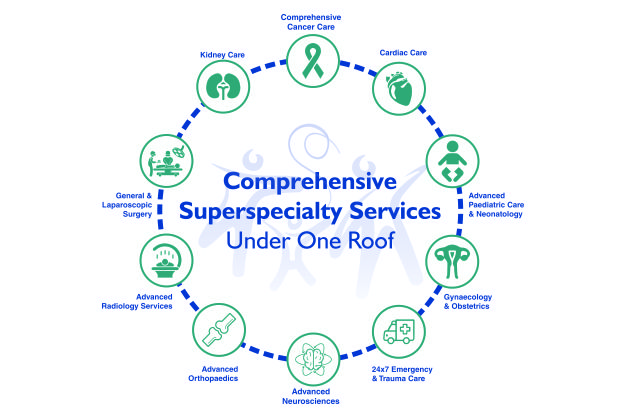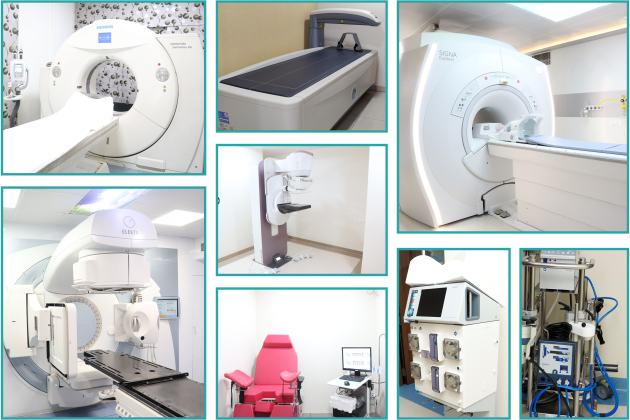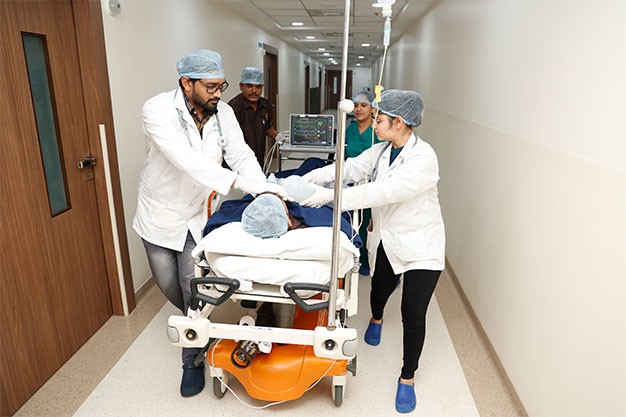Overview
The Department of Anaesthesiology at AIMS Hospital is an integral part of the hospital. The unit is equipped with latest technology devices for patient care, which include modern anesthesia machines, gadgets for managing difficult airway, vital parameter monitors, ventilators, transesophageal echocardiography machines amongst many others.
All clinical departments are anchored to this specialty. The strength of the department lies in its strong team comprising of efficient and experienced anesthesiologists and paramedical staff.
Anaesthesia
What is ‘Anaesthesia’?
The word ‘Anaesthesia’ means ‘loss of sensation’.
- It stops the Patient from feeling pain and other sensations.
- It can be given in various ways.
- Not all anesthesia makes the patient unconscious.
- It can be directed to different parts of the body.
Drugs that cause anesthesia work by blocking the signals that pass along Patient nerves to the Patient's brain. When the drugs wear off, the patient starts to feel normal sensations again, including pain.
Some types of anesthesia
Local anesthesia
A local anesthetic numbs a small part of the Patient’s body. It is used when the nerves can easily be reached by drops, sprays, ointments, or injections. The patient stays conscious but free from pain.
Regional Anaesthesia
Regional anesthesia can be used for operations on larger or deeper parts of the body. Local anesthetic drugs are injected near to the bundles of nerves which carry signals from that area of the body to the brain.
The most common regional anesthetics (also known as regional ‘blocks’) are spinal and epidural anesthetics. These can be used for operations on the lower body such as Caesarean sections, bladder operations, or replacing a hip joint. The patient stays conscious but free from pain.
General Anaesthesia
General anesthesia is a state of controlled unconsciousness during which the Patient feels nothing and may be described as ‘anesthetized’. This is essential for some operations and may be used as an alternative to regional anesthesia for others. Anesthetic drugs injected into a vein, or anesthetic gases breathed into the lungs, are carried to the brain by the blood. They stop the brain from recognizing messages coming from the nerves in the body.
Anaesthetic unconsciousness is different from unconsciousness due to disease or injury and is different from sleep. As the anesthetic drugs wear off, the Patient’s consciousness starts to return.
Combining types of anaesthesia
Anesthetic drugs and techniques are often combined.
For example:
- A regional anesthetic may be given as well as a general anesthetic to provide pain relief after the operation.
- Sedation may be used with a regional anesthetic. The regional or local anesthetic prevents the Patient from feeling pain, and the sedation makes the patient feel drowsy and mentally relaxed during the operation.
Sedation
Sedation is the use of small amounts of anesthetic
Specialists
ABOUT US
About AIMSDirector's Message
Vision & Mission
Accreditations
Awards & Accolades
Our Network
Phone Directory
Designed by Web Creations 2022. All rights reserved.










